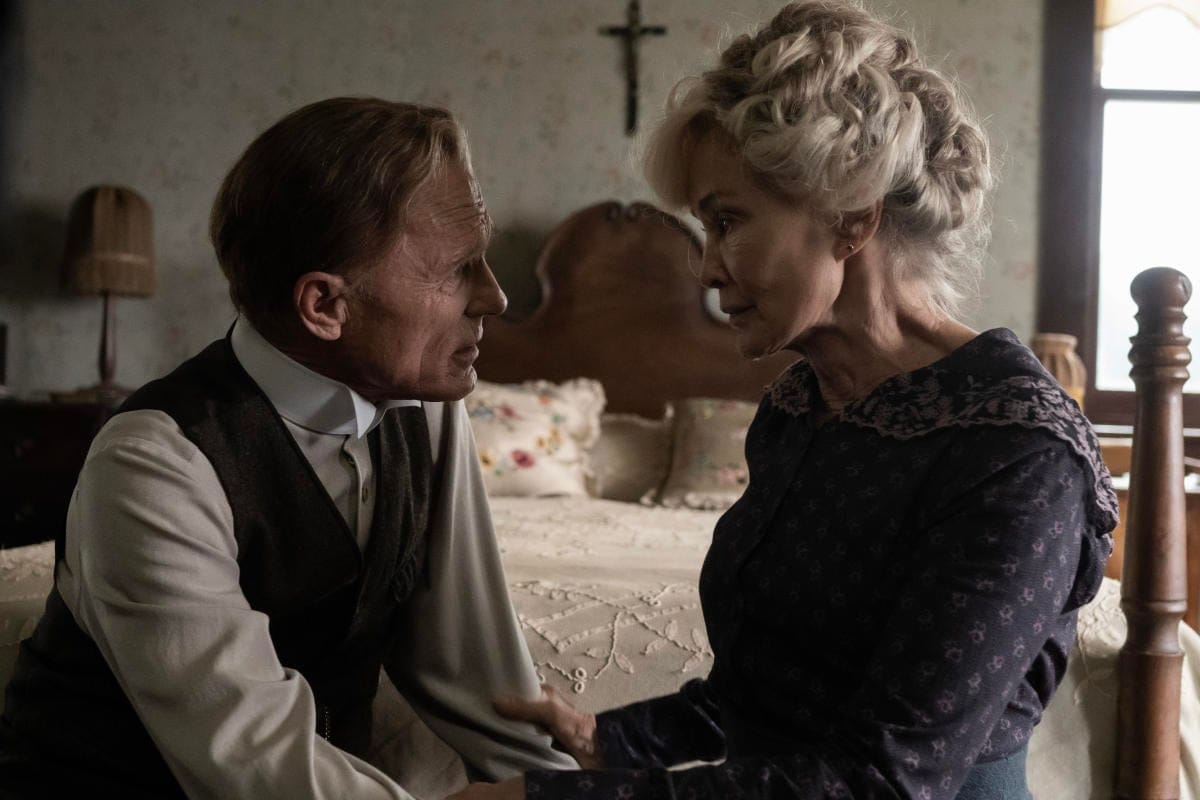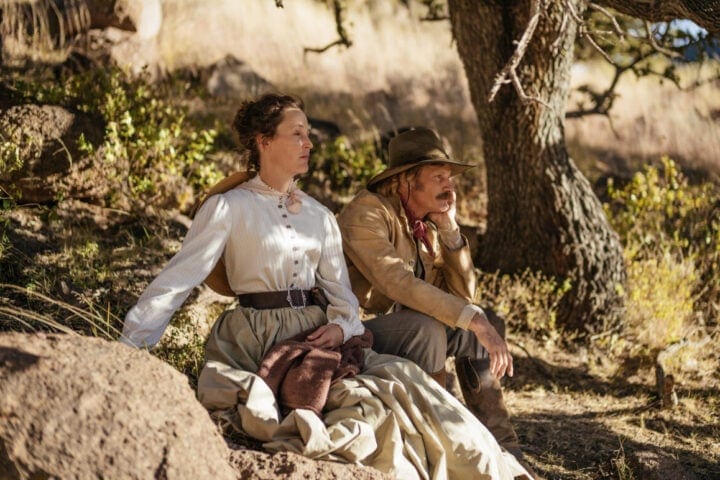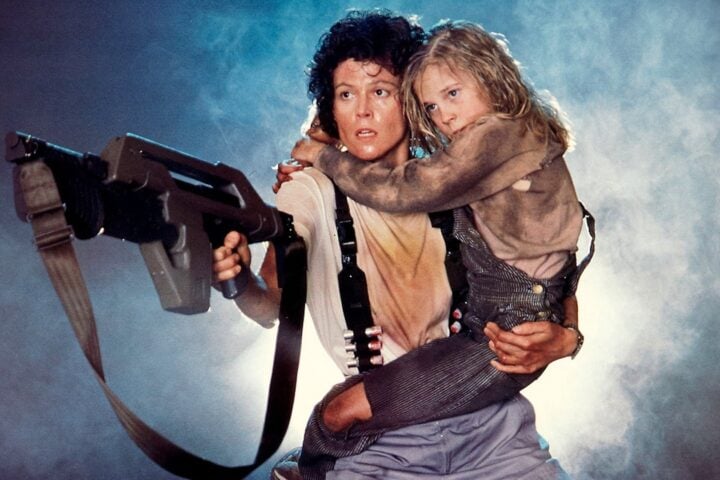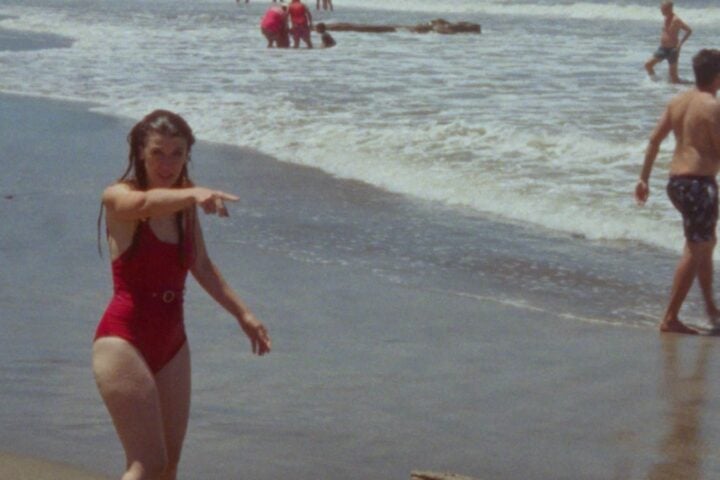Jonathan Kent’s feature film adaptation of Long Day’s Journey Into Night begins, as the famous Eugene O’Neill play usually does, at breakfast. James Tyrone (Ed Harris) and his wife Mary (Jessica Lange) are enjoying some idle morning chitchat in their seaside Connecticut home, discussing trivial things like the foghorn that blared all through the previous night. They’re soon joined by their two sons, Jamie (Ben Foster) and Edmund (Colin Morgan), who quickly liven up the conversation by throwing a few gentle jibes at their father. “The joke is always at the old man’s expense,” James complains, perhaps only half-seriously.
The entirety of the film takes place at the Tyrone house, following these four characters over the course of a single day. At breakfast they seem the picture of a happy family, yet the camera keeps finding little signs that something isn’t right. Often it will drift away from the person speaking to focus on the reaction of someone else at the table, from the concerned look that crosses James’s face when Mary isn’t looking, to the furtive glances shot between the sons while their mother is talking. It’s a subtle and effective technique, especially in the early part of the story when the most important part of the drama is all the things that the Tyrone family isn’t saying.
The opening scene also tells us exactly what sort of adaptation this is going to be. Adapted for the screen by Pulitzer Prize-winning playwright David Lindsay-Abaire, this Long Day’s Journey Into Night never tries to radically alter the original or transform it into something more cinematic. There are no self-indulgent camera flourishes or bits of visual trickery, and the direction never calls attention to itself. Kent, who directed the 2016 Broadway revival of O’Neill play that won Lange a Tony, wisely uses the camera merely to emphasize certain moments.
The film was shot in Ireland and made to look like a slice of life from a century ago, or perhaps just the memory of it. Everything from the house to the clothing has a tactile quality so intense that you can almost feel the hardness of the wood and the roughness of the fabric. It’s particularly impressive the way that the lighting transforms the Tyrone home from one scene to the next. The daytime scenes are marked by a waning light that seems bound to never become truly dark or fully bright. By afternoon, the rooms take on the sepia hue of an old photograph, and at night the electric bulbs lend an ethereal glow to the Tyrone family’s white shirts and nightgowns, making it seem as if we’re in the presence of ghosts.
In a work as psychologically rich and emotionally devastating as O’Neill’s, the performances are everything. Lange is at her most spellbinding when she’s playing characters who live on the edge of madness—one moment in the room with us, the next disappeared into some other world. She’s truly devastating in this adaptation, bringing a theatricality to every syllable of her performance but always remaining committed to the emotional reality of the character.
Opposite her, Harris is such a formidable, solid figure that it’s all the more tragic when the film rolls on and we discover the great depths of disappointment and despair that lie beneath James’s strong façade. Long Day’s Journey Into Night asks the most of Harris and Lange, with James and Mary getting the bulk of its most searing monologues and rapid emotional changes, across which the actors electrifyingly bring so many of their characters’ emotions to the surface, even as they convey that James and Mary are burying so much more beneath it.
It’s to their immense credit that Foster and Morgan hold their own opposite their legendary co-stars. A true four-hander, Kent’s film slowly reveals the miseries and misfortunes that plague each of the family members. The older of the Tyrone boys, James is accused serval times of seeing only the worst in everything. Perhaps he would sneer at this adaptation of Long Day’s Journey Into Night as more of a filmed play than a film, given that it’s not especially cinematic. But it’s so elegantly staged and brought to life so viscerally by its actors that perhaps even a dyed-in-the-wool cynic like James would find it impossible to deny its power.
Since 2001, we've brought you uncompromising, candid takes on the world of film, music, television, video games, theater, and more. Independently owned and operated publications like Slant have been hit hard in recent years, but we’re committed to keeping our content free and accessible—meaning no paywalls or fees.
If you like what we do, please consider subscribing to our Patreon or making a donation.






